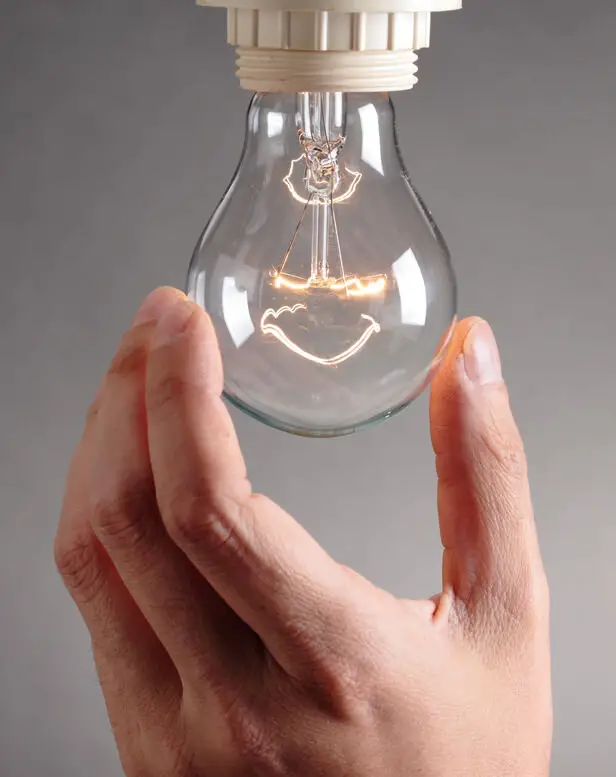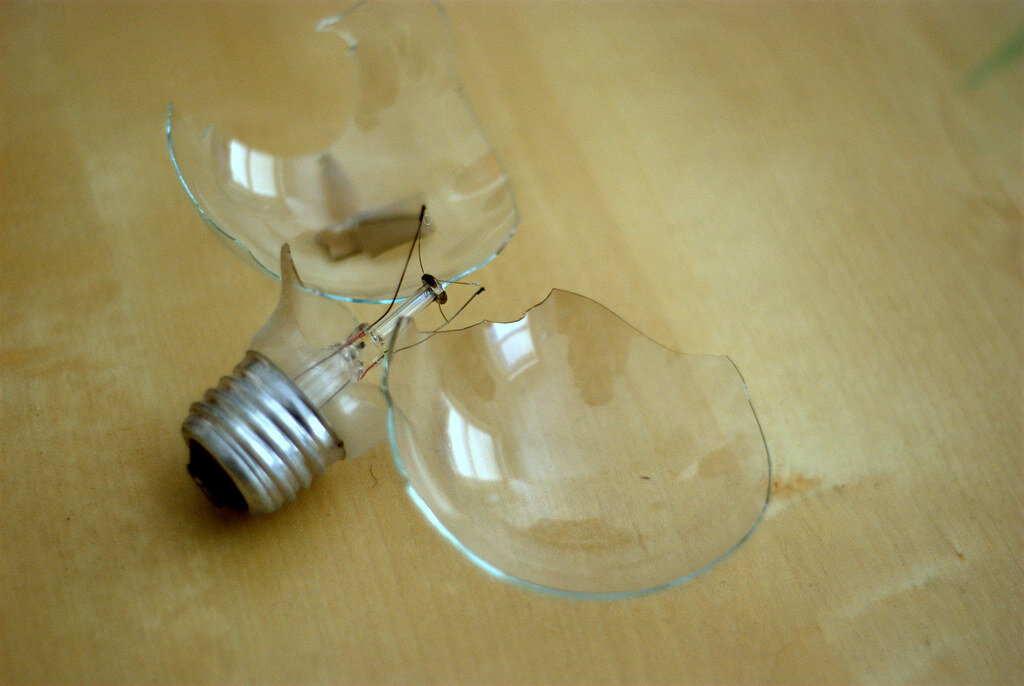Can You Electrocute Yourself While Changing a Light Bulb?
When you’re in the process of changing a light bulb you may be concerned about the safety of the operation. You might be wondering about the probability of getting an electrical shock from it in particular.
It is entirely possible to get electrocuted while changing a light bulb if the correct safety precautions aren’t taken. In order to avoid getting electrocuted you should turn the light switch off and stand on a stable surface as you’re changing out the bulb.
To expand on this we will go through the most prominent risks of changing a light bulb and how to avoid them in the best way possible. If you instead want a more in-depth guide on how to safely change a light bulb, you can check that out here.

Electrical Dangers Of Changing A Light Bulb
In normal scenarios where everything is wired correctly, you should usually be safe to change the bulb even if it would be turned on. The way fixtures are constructed makes it somewhat hard to accidentally get electrocuted.
Realistically speaking, the only way you’d get electrocuted from the socket is if you were to stick your fingers in there while it is on while you’re also connected to some sort of ground.
It’s a bit unlikely unless you’re actually trying to make it happen, but it’s also not impossible if it’s accidental, accidents happen after all.
However, the main electrical danger you would encounter is simply the fact that the fixture that the bulb is in is turned on. It sounds rather obvious but it should still be addressed.
There are 2 main ways someone would most likely go about solving this issue:
Turning the fixture off by the light switch
Using the circuit breaker in the fuse box
Turning off the fixture by the light switch works somewhat, but it has some problems. The main problem with that is that there is a chance that the fixture could still be live due to either a mistake in the wiring or just poor electrical decisions.
The way it could still be live depends on how the instalment is constructed. The most normal and definitely the best work practice for the instalment of fixtures and light switches is to break the power line that goes into the lamp and let the neutral line stay intact.
What can happen though is that they do the opposite, they break the neutral line instead of the power line. This achieves the same thing in a functional sense, the light turns off when you turn off the switch.
The difference though is that when you do it this way, the fixture itself is still supplied with voltage. If you aren’t familiar with electricity, this means that when you touch the fixture and the ground at the same time you will have a current that goes through your body
This risk can be completely negated if it’s installed the proper way, however, there is no real way to know that it’s installed properly unless you either break out the lighting wiring or measure for voltage in the fixture.
Measuring the voltage in the fixture is actually a pretty good idea since then you will know for sure whether or not it would be considered safe or not. Not many people have a measuring instrument though, so it’s not exactly reliable for everyone unless you go and get one and more importantly learn how to use it.

The circuit breaker, however, is almost the idiot-proof way of not getting shocked while changing the lightbulb. It is definitely not as common for the circuit breaker to be constructed wrong or poorly wired as it is for the light switch.
Also, it’s way easier to know that the fixture is safe if you use the circuit breaker. Assuming that things are installed in normal manners, everything for that designated fuse will turn off altogether and there would be a 0% chance of somehow getting a shock.
Something that can happen in the circuit breaker scenario though, is that someone else in the house might turn on the fuse while you’re switching the bulb. Most likely it wouldn’t be detrimental by any means, as the chance of getting shocked isn’t very high to begin with, but if it can be avoided it definitely should be.
For that, you would probably just want to tell everyone in your home what you are up to and just tell them to not turn on the fuse under any circumstances. That should do the trick, if that doesn’t work then maybe you have worse problems to deal with than some broken lightbulb.
In conclusion: changing a lightbulb with the power on is definitely never a good idea and should (in most everyday scenarios) never be done.
The Surface Heat Of The Bulb
The reason why the electricity itself isn’t the biggest risk you might face is because from an electrical point of view you’re usually rather safe.
The actual bulb itself is usually made out of glass or plastic, which are both great insulator material. With that said, touching only the bulb while switching a lightbulb would not result in any electricity-based damage.

The biggest risk you might face when changing a lightbulb is the heat. A regular incandescent lightbulb can reach a surface temperature of 250 degrees Fahrenheit (~120°C) which can for obvious reasons cause some severe damage if exposed to the heat for too long.
There are however light sources that generate a lot less heat, with the main example being LED, although that’s not to say that LEDs don’t produce any significant heat.
For example, LEDs that are used for car headlights can reach surface temperatures of up to 200 degrees Fahrenheit (~95°C) but between different models, they tend to stay between 100-200 degrees Fahrenheit (~35-95°C).
You might think that since the LEDs used in car headlights are more powerful than the ones used inside that they get a lot hotter, which is true since LEDs produce more heat the larger the energy consumption. However, that still means that the surface temperature of an LED bulb is usually rather hot by human standards.
With all of this being said, simply just make sure to let the bulb cool down before removing it. It usually doesn’t take very long and can save you from accidentally burning yourself.
The Light Bulb Breaking

A factor not many think about is that things could very easily break when changing a lightbulb. A somewhat common one is that the bulb sits a bit tight and you try to use a bit of force to make it release.
This can easily cause the bulb to break since it’s usually made out of a very thin layer of glass.
Glass is very prone to serious cuts, especially in this way since you’re holding it very tight in your hand right before it bursts. If you try the bulb and it sits rather stuck, make sure to use a glove or something of that nature to protect yourself from potential injuries.
If you instead have been running into the issue of light bulbs breaking with regular usage you can see possible reasons for that here.
Additional Factors That Make Changing Light Bulbs Hazardous
While we have already stated the most important and dangerous factors above, there are still a few things one should keep in mind.
One thing is to simply do it safely. With this, I don’t even mean to do it with a certain technique or anything like that, more about just general workplace safety.
The main risk is with the ladder used when changing out a bulb. In fact, over 20 000 ladder-related injuries took place in the workplace in 2015. Out of these 20 000, a majority of them happened when standing under 3 feet (~1 meter) from the ground.
That being said, changing a lightbulb is in most scenarios in the biggest risk zone for having an accident take place.
Another related thing could be the people around you. What might happen is that someone knocks the ladder over by accident, causing you potentially serious damage. Try your best to keep people away during the operation, it might just be best that way.
Summary
Getting electrocuted by a light socket as you are switching out a light bulb is a rare occurrence, but it should be something to keep in mind when you change out your bulbs.
The main safety precautions to take before changing out your light bulbs are:
- Turn off the electricity to the light socket of the bulb you are switching out.
- Make sure the bulb is cool enough to handle safely.
- Stand on a stable surface as you’re switching out the bulb.





